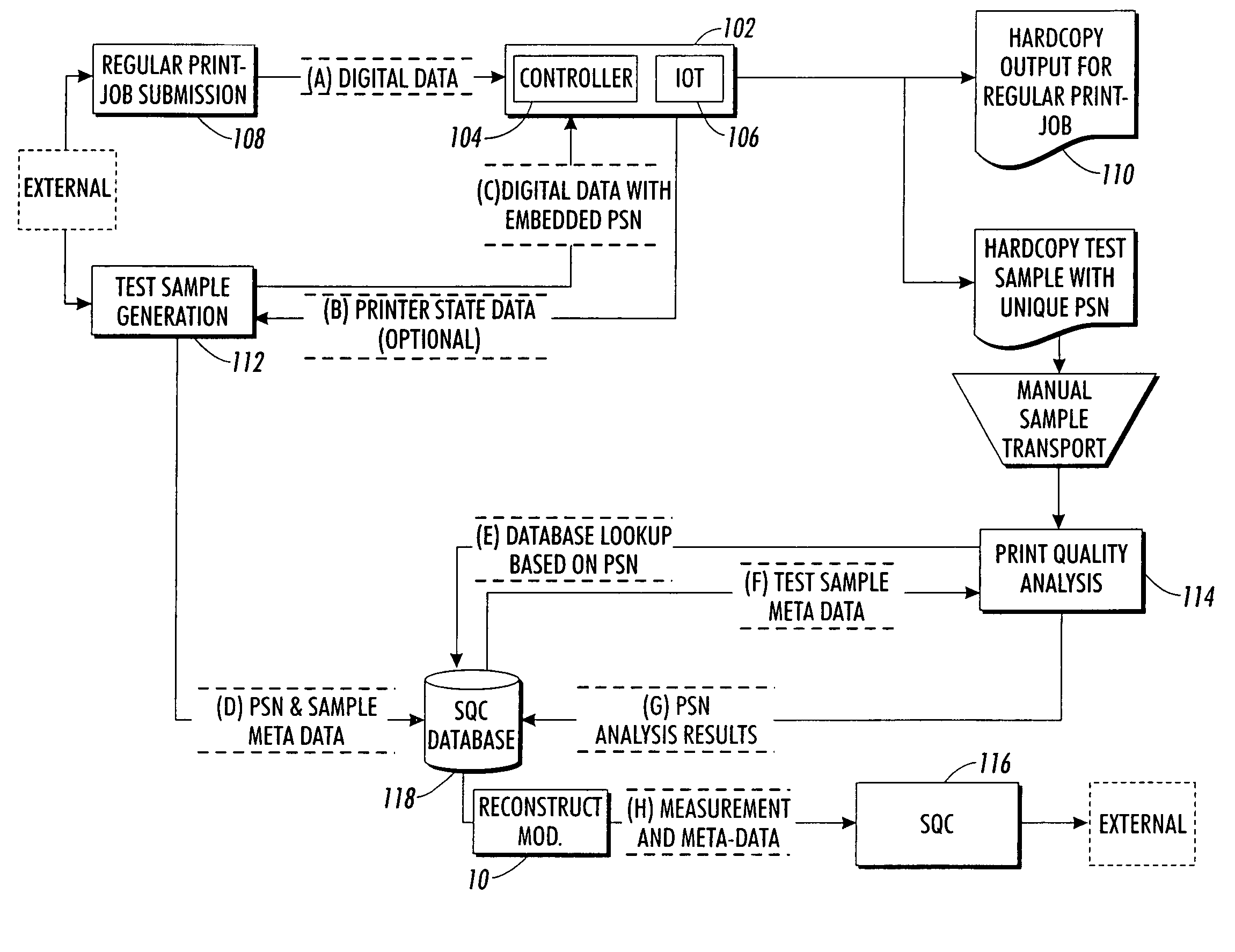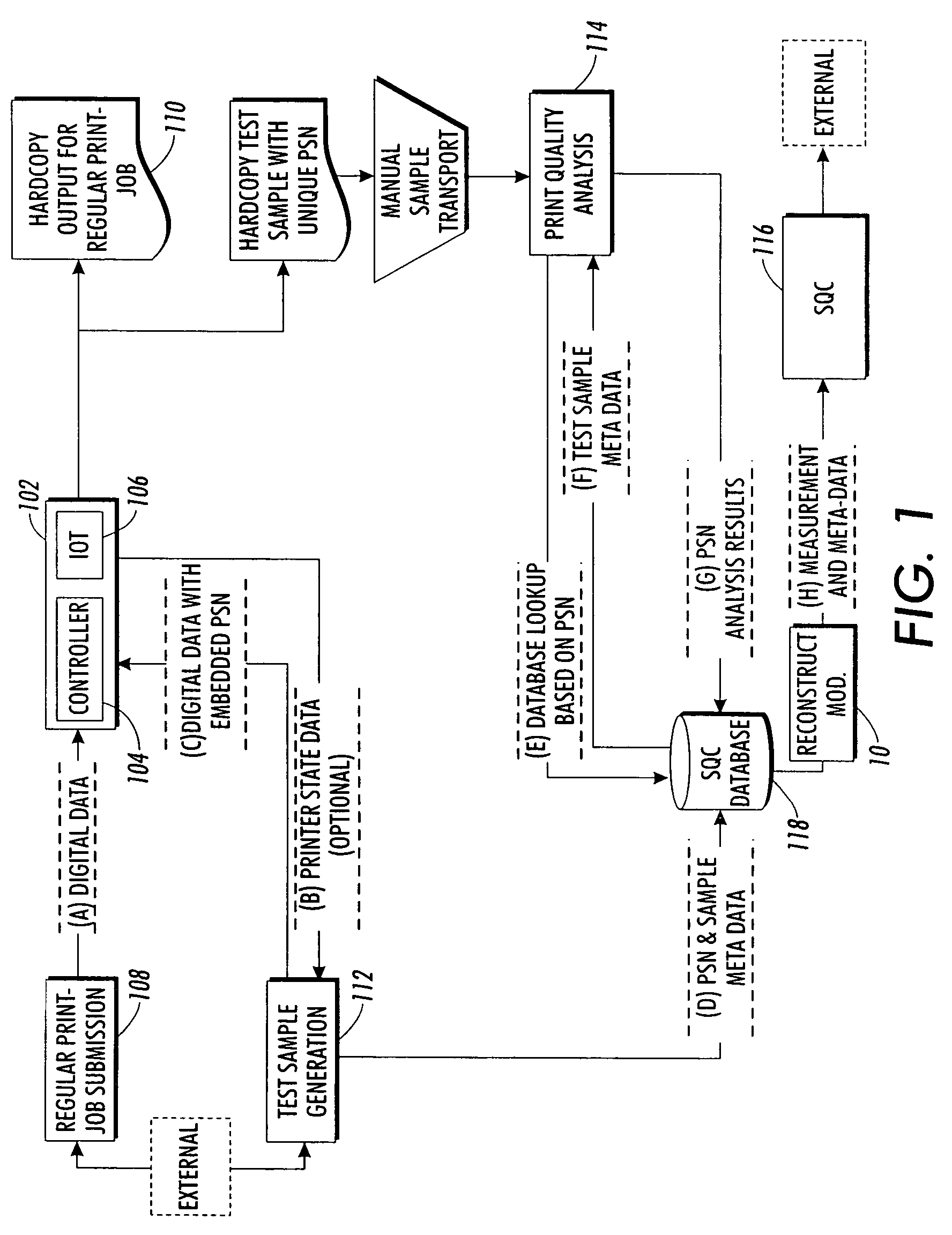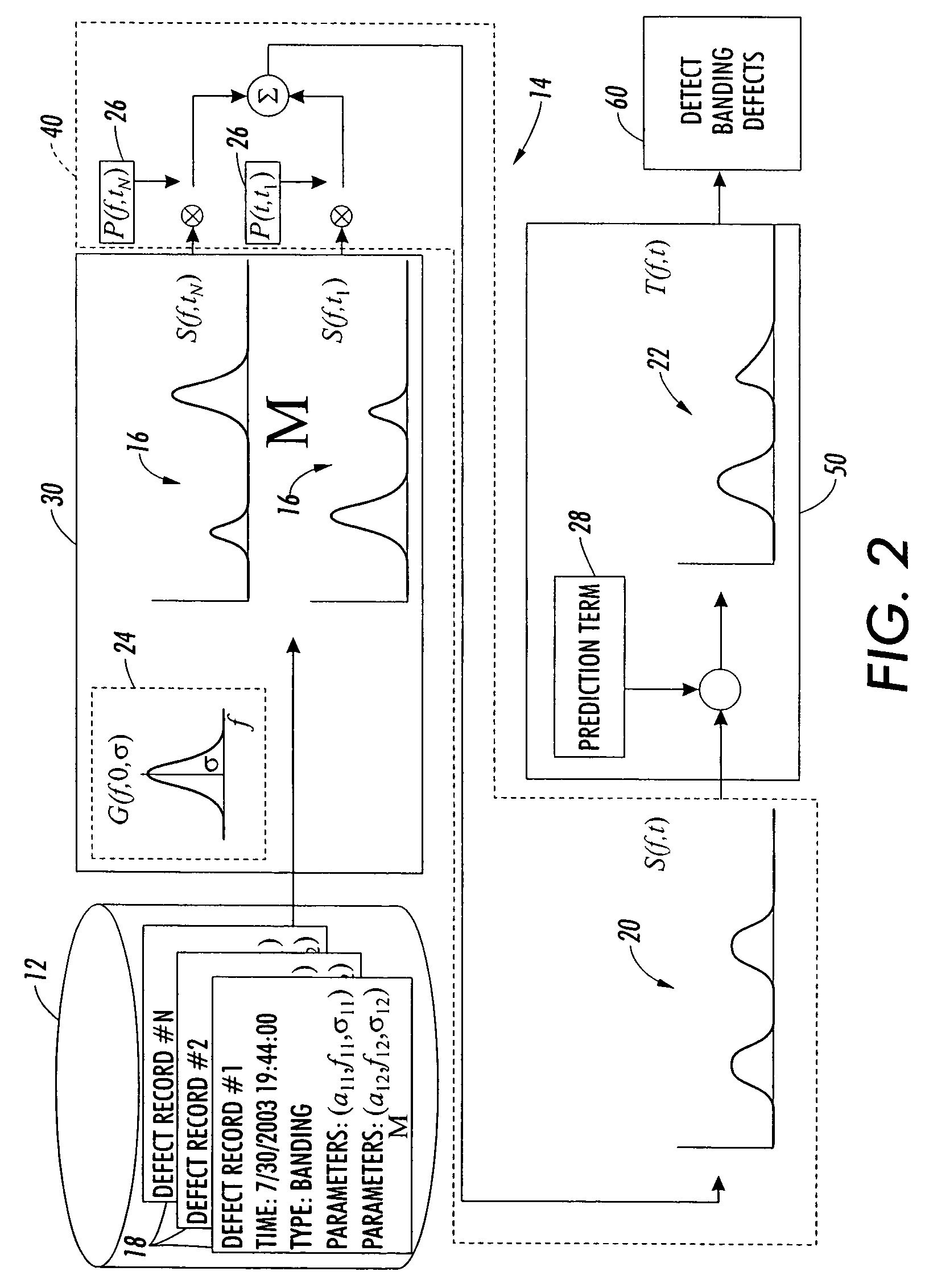Image quality defect detection from image quality database
a technology of image quality and database, applied in the field of image quality defect detection from image quality database, can solve the problems of generating erroneous image data, undesirable to request service calls or take other corrective measures based on defective image quality data, and facilitating the utilization of data, improving measurement robustness, and confirming the accuracy of the most recently acquired image quality data
- Summary
- Abstract
- Description
- Claims
- Application Information
AI Technical Summary
Benefits of technology
Problems solved by technology
Method used
Image
Examples
Embodiment Construction
[0038]For the purposes of promoting an understanding of the principles of the disclosure, reference will now be made to the embodiments illustrated in the drawings and described in the following written specification. It is understood that no limitation to the scope of the disclosure is thereby intended. It is further understood that the present invention includes any alterations and modifications to the illustrated embodiments and includes further applications of the principles of the invention as would normally occur to one skilled in the art to which this invention pertains.
[0039]The disclosed method of detecting banding defects may be implemented in a six sigma image quality (“SSIQ”) system 100 by implementing a reconstruction module 10 that utilizes the historical data from the image quality database (IQDB) 12 stored in the database 118 about the image output devices (“IOTs”) 106 and makes predictions when necessary. While the disclosed reconstruction module 10 implements a ban...
PUM
| Property | Measurement | Unit |
|---|---|---|
| banding defects | aaaaa | aaaaa |
| frequency | aaaaa | aaaaa |
| spectra | aaaaa | aaaaa |
Abstract
Description
Claims
Application Information
 Login to View More
Login to View More - R&D
- Intellectual Property
- Life Sciences
- Materials
- Tech Scout
- Unparalleled Data Quality
- Higher Quality Content
- 60% Fewer Hallucinations
Browse by: Latest US Patents, China's latest patents, Technical Efficacy Thesaurus, Application Domain, Technology Topic, Popular Technical Reports.
© 2025 PatSnap. All rights reserved.Legal|Privacy policy|Modern Slavery Act Transparency Statement|Sitemap|About US| Contact US: help@patsnap.com



